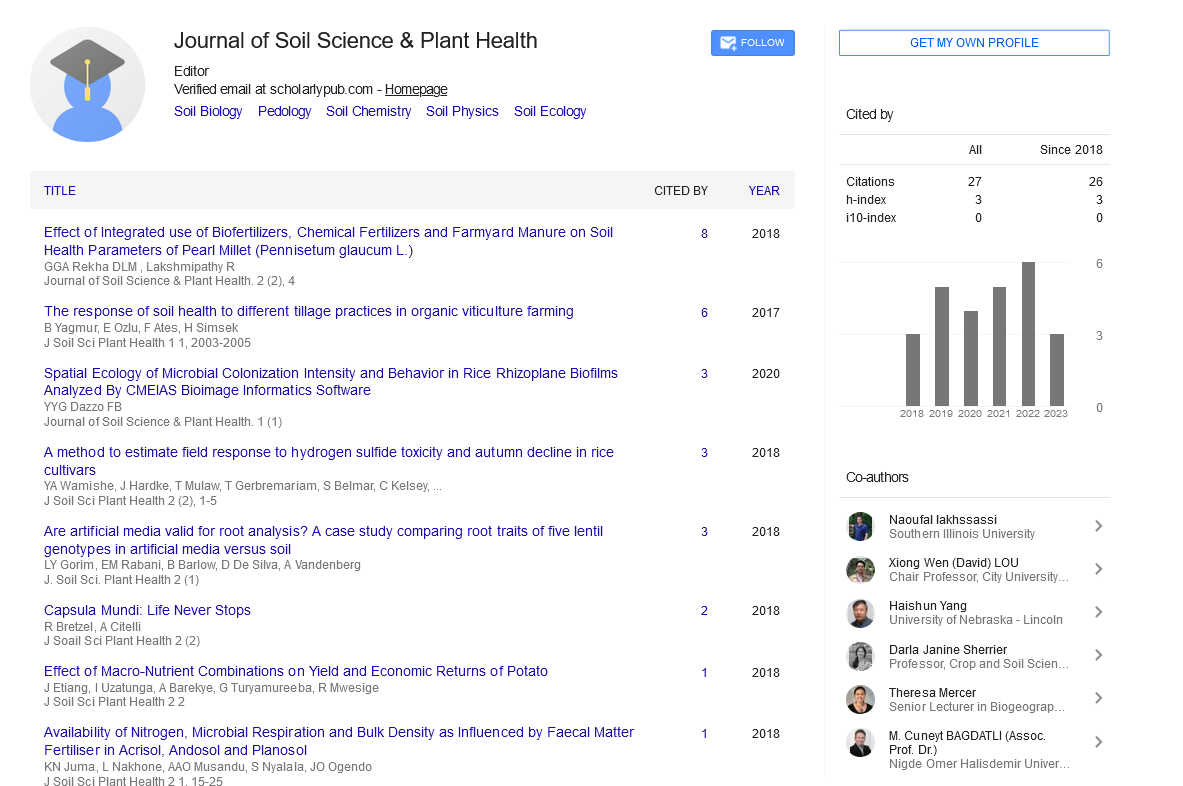Editorial, J Soil Sci Plant Health Vol: 5 Issue: 12
A Threat to Global Food Security
Mariola Kwasek*
Department of Agricultural and Food Economics, National Research University, Warsaw, Poland
*Corresponding author: Dr. Mariola Kwasek, Department of Agricultural and Food Economics, National Research University, Warsaw, Poland, Email: kwasek@ierigz.waw.pl
Received date: December 02, 2021; Accepted date: December 16, 2021; Published Date: December 23, 2021
Citation: Kwasek M (2021) A Threat to Global Food Security. J Soil Sci Plant Health 5:12
Abstract
A vast number of plant pathogens from viroids of a few hundred nucleotides to higher plants cause diseases in our crops. Their effects range from mild symptoms to catastrophes in which large areas planted to food crops are destroyed. Catastrophic plant disease exacerbates the current deficit of food supply in which at least 800 million people are inadequately fed. Plant pathogens are difficult to control because their populations are variable in time, space, and genotype. Most insidiously, they evolve, often overcoming the resistance that may have been the hard-won achievement of the plant breeder. In order to combat the losses they cause, it is necessary to define the problem and seek remedies. At the biological level, the requirements are for the speedy and accurate identification of the causal organism, accurate estimates of the severity of disease and its effect on yield, and identification of its virulence mechanisms. Disease may then be minimized by the reduction of the pathogen's inoculum, inhibition of its virulence mechanisms, and promotion of genetic diversity in the crop. Conventional plant breeding for resistance has an important role to play that can now be facilitated by marker-assisted selection. There is also a role for transgenic modification with genes that confer resistance. At the political level, there is a need to acknowledge that plant diseases threaten our food supplies and to devote adequate resources to their control.
Keywords: Global Food Security, catastrophes, global perspectives
Editorial Note
A vast number of plant pathogens from viroids of a few hundred nucleotides to higher plants cause diseases in our crops. Their effects range from mild symptoms to catastrophes in which large areas planted to food crops are destroyed. Catastrophic plant disease exacerbates the current deficit of food supply in which at least 800 million people are inadequately fed. Plant pathogens are difficult to control because their populations are variable in time, space, and genotype. Most insidiously, they evolve, often overcoming the resistance that may have been the hard-won achievement of the plant breeder. In order to combat the losses they cause, it is necessary to define the problem and seek remedies. At the biological level, the requirements are for the speedy and accurate identification of the causal organism, accurate estimates of the severity of disease and its effect on yield, and identification of its virulence mechanisms. Disease may then be minimized by the reduction of the pathogen's inoculum, inhibition of its virulence mechanisms, and promotion of genetic diversity in the crop. Conventional plant breeding for resistance has an important role to play that can now be facilitated by marker-assisted selection. There is also a role for transgenic modification with genes that confer resistance. At the political level, there is a need to acknowledge that plant diseases threaten our food supplies and to devote adequate resources to their control.
Food security
For centuries food security was interpreted as the possibility of providing food produced in a given country in full or in the majority to satisfy the demands of all inhabitants. This meaning of food security has changed, along with development of trade and international specialty. The rapid growth in worldwide food production and free international trade has enabled the countries with disadvantageous conditions to purchase the necessary food from other markets. Access to food depended on incomes, and not national production. Financial security prevailed over food security. This perspective was influenced by economists who wanted to treat food and agrarian products just like other goods, and make the volume and structure of domestic food production subordinate to market regulations and the comparative costs rule. Only the global crisis in 2007/2008 renewed the debate on food security from the household, national, regional (e.g. European Union) and global perspectives.
Food security may be achieved only with the simultaneous provision of economic and social security, as well as maintenance of domestic production at a level ensuring food accessibility and foreign trade or food reserves and the correct functioning of processing and distribution. Food security results mainly from systemic and institutional solutions in the fields of politics, economy and society. The European Union, as the largest economy in the world, can play an important role in ensuring global food security in a world of limited resources. Currently, the debate over the future shape of the common agricultural policy after the year 2013 is running. The issue of food security is one of many topics in this debate. Food security is of fundamental importance for human existence. Food security exists when all people, at all times, have physical, social and economic access to sufficient, safe and nutritious food that meets their dietary needs and food preferences for an active and healthy life.
 Spanish
Spanish  Chinese
Chinese  Russian
Russian  German
German  French
French  Japanese
Japanese  Portuguese
Portuguese  Hindi
Hindi 